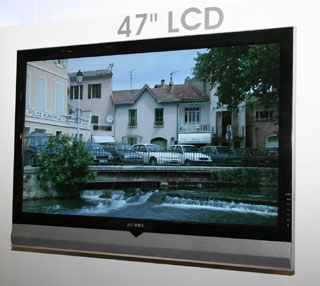Shipments of TFT-LCD Panels to Recover in Second Half
2008/08/08 | By Philip LiuThe supply chain for thin film transistor-liquid crystal display (TFT-LCD) panels will regain normal operations and prices will rebound in the second half of this year, predicts the Market Intelligence Center (MIC) of Taiwan's Institute for Information Industry (III), as demand from the information technology industry recovers and the traditional peak season for LCD TV sales approaches.

The recovery was already apparent in the second quarter, when shipments of large-sized (over 10 inches) TFT-LCD panels rose 6.1% from the previous quarter and 22.7% from the same quarter of 2007 to reach 54.51 million units. The revenues generated by those shipments amounted to US$8.39 billion, down 4.5% from the first quarter but up 27% year-on-year.
The average selling price of large-sized panels was still down in the second quarter, at US$153.9, due mainly to oversupply resulting from weak demand from the terminal market and the large inventories of downstream manufacturers.
MIC predicted that shipments of small and medium-sized panels would grow in the second half, with shipments forecast to reach 162.75 million units (up 15.7% quarter-on-quarter) in the third quarter and more than 172.34 million units (up 5.9%) in the fourth.
According to MIC, demand from cellphone and digital photo frame products in the United States and China has not been as strong as expected due to such factors as natural disasters (snowstorms in China), inflation, and high fuel prices.
The buildup of inventories by suppliers of small and medium-sized panels, LCD module (LCM) producers, and system manufacturers was aggravated by the weak performance of the global electronics market. Taiwan's total shipments of small and medium-sized panels in the second quarter dropped 6.4% from the previous quarter, to 140.71 million units.
Slipping Prices
MIC also predicted that the average selling price of Taiwan-made LCD TVs would slip to US$393 in the third quarter; thanks to increased sales volume, however, the sector's revenues are forecast to rise 27.9% to US$2.38 billion. MIC believes that models over 32 inches in size will gain market share in the fourth quarter and generate a production value of US$2.96 billion, an increase of 24.2% over the previous quarter and 38.1% on the same quarter of 2007.
However, MIC cautions, high fuel prices and worries about inflation will drive consumers to buy smaller TVs in the future. Major TV vendors throughout the world are expected to continue cutting prices in the third quarter to stimulate demand; they are also expected to further increase their outsourcing of production, which will give a boost to Taiwan's LCD TV industry.
The island's shipments of LCD TVs in the second quarter were up 8.3% from the first quarter and 41.3% from Q2 of 2007 to 4.56 million units, with 32-inch models continuing to be the mainstream products.
Although the global LCD TV market suffered from unfavorable economic factors in the second quarter, the market was propped up by strong replacement demand from Eastern Europe.
MIC also predicted that such factors as falling monitor prices, the traditional peak sales season, and back-to-school demand would boost Taiwan's shipments of LCD monitors in the third and fourth quarters to 33 million and 35 million units, respectively.
Shipments of these products in the second quarter were up 10% from the first quarter and 0.4% from the same quarter of 2006, to 29 million units. The total revenue produced by those shipments increased 8.4% from Q1, to US$46.84 million.
Within total second-quarter monitor shipments, MIC reported, 19-inch wide-screen models boosted their share to 29.7% and 17-inch models garnered a 21.9% share. Twenty-two-inch wide-screen models outstripped 19-inch standard-screen models in market share for the first time, with 15.1%, to take third place. Wide-screen models accounted for 64% of all LCD monitor shipments in the second quarter, up five percentage points from the first quarter, according to MIC.




